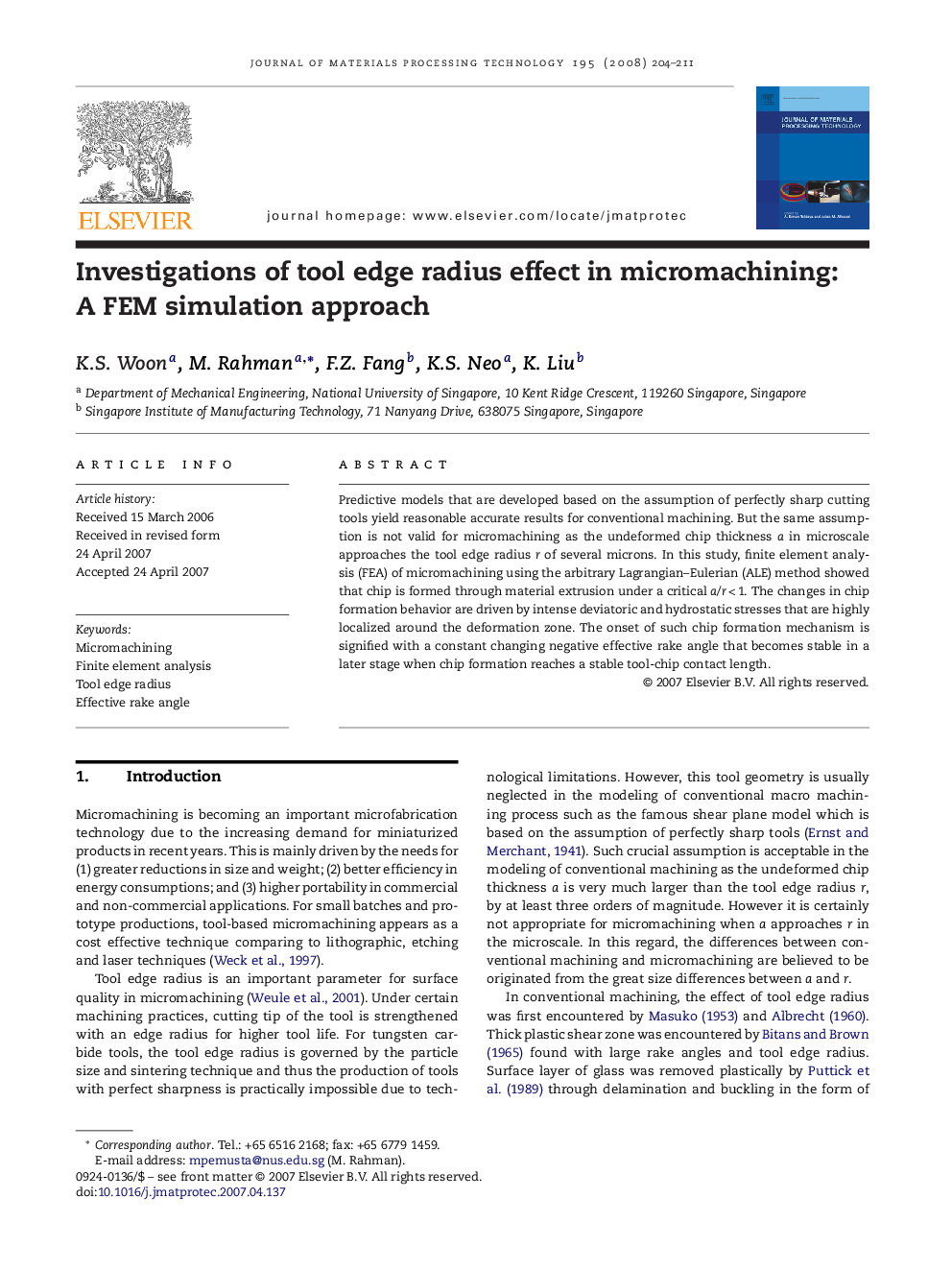| Article ID | Journal | Published Year | Pages | File Type |
|---|---|---|---|---|
| 793864 | Journal of Materials Processing Technology | 2008 | 8 Pages |
Predictive models that are developed based on the assumption of perfectly sharp cutting tools yield reasonable accurate results for conventional machining. But the same assumption is not valid for micromachining as the undeformed chip thickness a in microscale approaches the tool edge radius r of several microns. In this study, finite element analysis (FEA) of micromachining using the arbitrary Lagrangian–Eulerian (ALE) method showed that chip is formed through material extrusion under a critical a/r < 1. The changes in chip formation behavior are driven by intense deviatoric and hydrostatic stresses that are highly localized around the deformation zone. The onset of such chip formation mechanism is signified with a constant changing negative effective rake angle that becomes stable in a later stage when chip formation reaches a stable tool-chip contact length.
